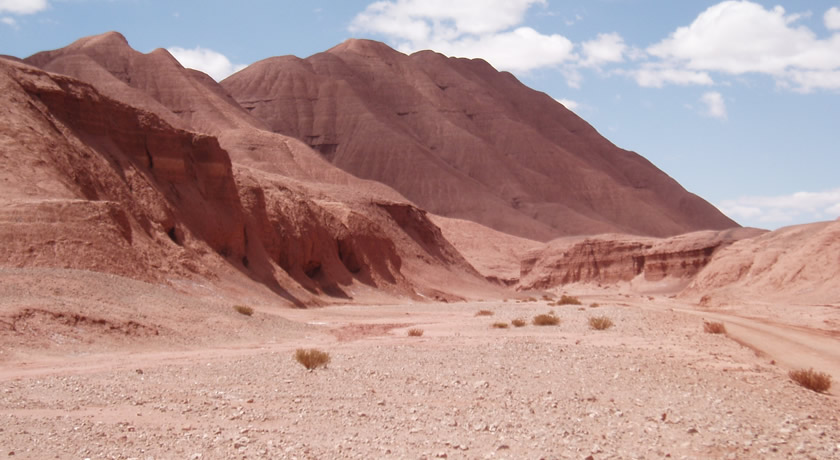Finding the missing roots of the Andes
Katalin Kovacs - 1 July 2015

This is part of the Arizaro basin. Claire Currie‘s research indicates that subsidence occurred in this area during lithosphere removal. Subsidence started about 20 million years ago. As the surface subsided, the basin filled with sediments -- over 3 km thick! The region then started to uplift in the last 8 million years, and you now see the sediments as high elevation features. (Photo by Claire Currie, University of Alberta.)
Claire Currie, an associate professor of geophysics at the University of Alberta, is studying how the longest continental mountain range in the world has lost its roots. Her computer models are probing the geological mysteries of the Andes, including why the material under the mountain range is much thinner than expected.
“The Andes are the second-highest mountain belt on Earth, but their formation is enigmatic. Unlike the Himalayas, there is no continental collision that is driving the mountain-building. As the mountains formed, the crust doubled in thickness, but geophysical data show that the deep part of the continent (the mantle lithosphere) is not anomalously thick, so it seems like the deep roots of the mountains have been removed.”
Our planet is made up of several layers, like an onion. The crust—the outermost layer on which we live—is comparatively thin, and constitutes less than one per cent of the entire volume of the Earth. Currie’s research focuses on the lithosphere, which includes the crust and the uppermost solid part of the mantle. The lithosphere is relatively thin under oceanic crust and thicker under continental crust, extending as far as several hundred kilometres below the surface under the continents. Studying these deep roots requires cutting-edge geophysical measurements and computer models such as those that Currie’s group is pioneering.
While the lithosphere is mostly solid, as it is in direct contact with the hot and fluid upper mantle layer, it melts and even "drips" at its base. Over geological time scales spanning millions of years, the lithosphere may be affected by the movement of the mantle underneath. Currie’s research is revealing how lithospheric dripping 50 to 150 km beneath our feet can have surprising consequences at the surface.
Together with her former PhD student, Huilin Wang, Currie has been studying the nature of mysterious circular basins in the Andes. Their surfaces seem to bob up and down within the mountain belt, thus their name, “bobber basins.”
“As they can not be clearly related to mountain-building, it was proposed that they may represent local areas where the deep lithosphere is "dripping"—the surface is pulled downward as the drip forms and then uplifts after drip detachment.”
The uplift of the bobber basins, however, seems to predate the detachment of the drips. Currie hypothesizes that this is due to the crust around the basins filling in the bottom before the drip detaches.
The Andes mountain range is also the subject of future work for Currie. “We have been working on models to understand how the mountain belt could form without continental collision,” she says. Interactions between the lithosphere under the mountain range and the tectonics in the area may be the key to explain the “missing roots” of the Andes.